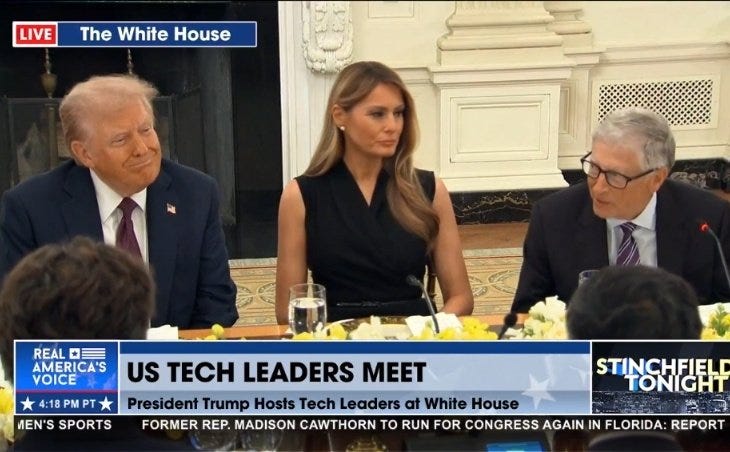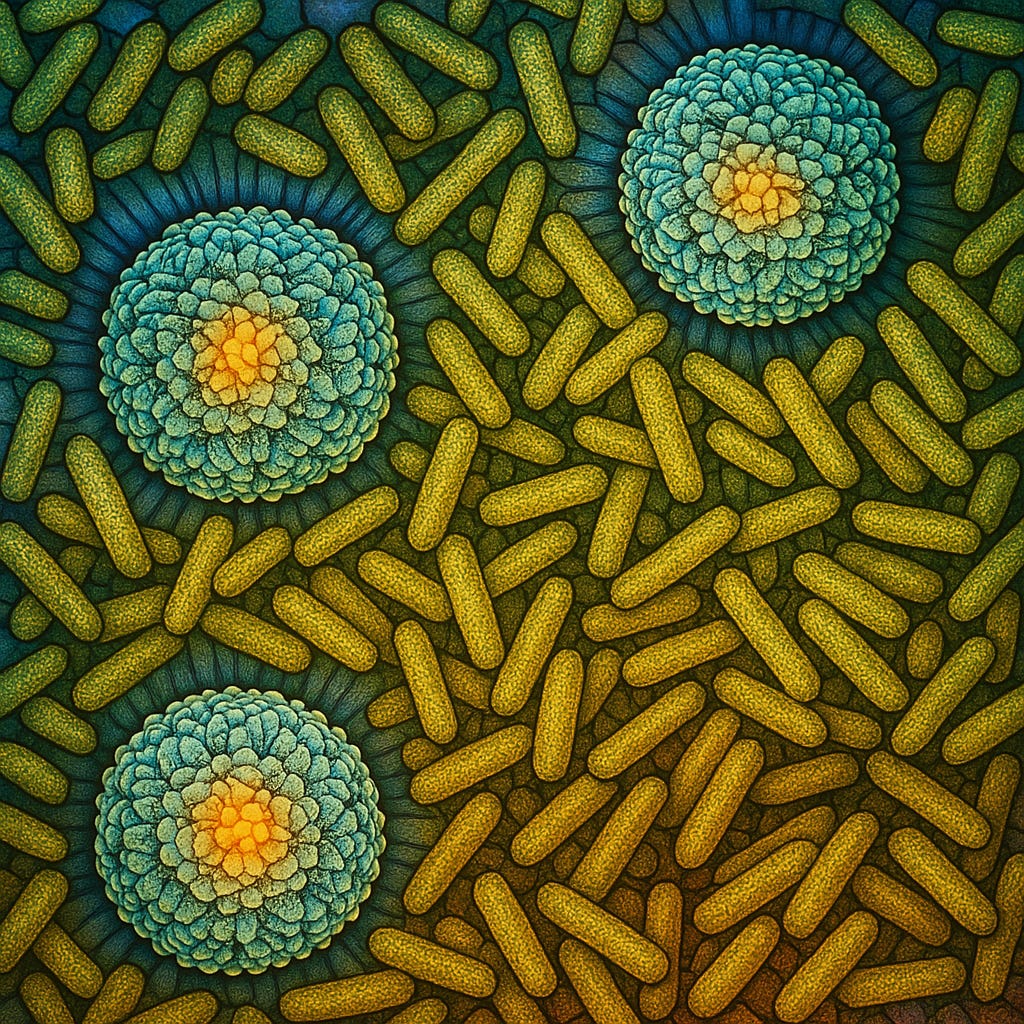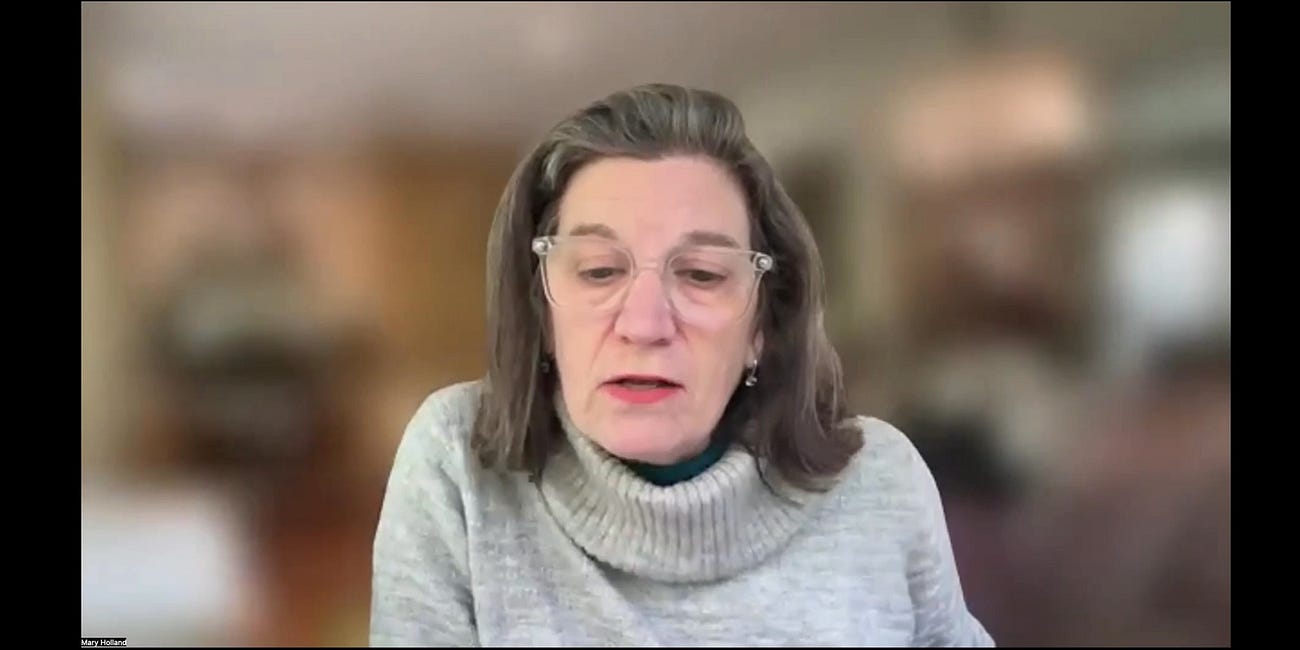Dissolving Polio Myths: Eight Suppressed Truths About Its Decline
How Environmental Toxins, Diagnostic Manipulation, and Vaccine-Derived Paralysis Challenge the Conventional Narrative of History's Most Celebrated Public Health Victory
View, share and comment on the X thread related to this post: https://x.com/sayerjigmi/status/1867349878458003826
Story at a glance
The polio narrative oversimplifies a complex environmental and public health story: Evidence suggests paralytic polio outbreaks coincided with mass exposure to neurotoxic pesticides like DDT and lead-arsenate, while diagnostic changes in 1955 artificially reduced case numbers by 30-50%, making vaccine success appear greater than reality.
Modern polio eradication has created new problems: India’s “polio-free” status masks 47,500 excess paralysis cases in 2011 alone from non-polio acute flaccid paralysis (NPAFP), with rates directly proportional to oral polio vaccine doses administered, while globally, vaccine-derived poliovirus now causes more paralysis than wild strains.
Sanitation and nutrition drove much of polio’s decline: U.S. polio cases dropped from 57,000 in 1952 to 18,000 in 1954—before widespread vaccination—while improvements in water quality, hygiene, and nutritional status paralleled decreases in multiple enteric diseases including polio.
The virus-only theory ignores terrain medicine: With 95% of poliovirus infections being completely asymptomatic and only 0.1-1% causing paralysis, polio functioned more as a commensal organism that became dangerous only under specific environmental stressors, suggesting prevention strategies should address host resilience alongside vaccination.
Introduction: Re-examining a Public Health Triumph
Polio—the dreaded paralytic disease of the 20th century—has long been held up as the ultimate triumph of modern vaccines. In the mainstream telling, Jonas Salk’s killed virus vaccine (and later Albert Sabin’s oral vaccine) vanquished a merciless virus and consigned poliomyelitis to the history books. Global vaccination campaigns are credited with reducing polio cases by 99% since 1988, and the world stands on the brink of eradication thanks to this “miracle” intervention.
But is this rosy story the full truth? A growing body of evidence—historical data, medical literature, and testimony from experts—suggests the conventional polio narrative is incomplete, if not flat-out wrong, on multiple counts.
This report takes a hard look at polio’s history and the vaccine campaign, uncovering eight key underreported facts that challenge the dominant narrative. From the quiet redefinition of the disease that made vaccine success appear bigger than it was, to the overlooked role of environmental neurotoxins in causing polio-like paralysis, to the uncomfortable reality that the vaccine itself has become a major cause of paralysis, we assemble evidence that polio’s story is far more complex than the simplistic “germ conquered by vaccine” fable.
In fact, this broader reassessment is now entering the mainstream of U.S. health policy. Just yesterday, Health and Human Services Secretary Robert F. Kennedy Jr. released a statement and video underscoring that the decline of infectious disease mortality in the 20th century was driven far more by sanitation, nutrition, and engineering advances than by vaccines. At a recent Senate Finance Committee hearing, he dismantled a chart used to argue that vaccines saved “hundreds of millions of lives,” pointing out that diseases like measles, whooping cough, influenza, tuberculosis, and scarlet fever had already seen dramatic declines before mass vaccination campaigns began. Kennedy cited CDC- and Johns Hopkins–funded research and even warned, echoing Harvard infectious disease authority Dr. Edward Kass, that industry actors have long sought to claim unearned credit for these mortality declines
While Kennedy’s remarks did not focus specifically on polio, this exact argument—that improved sanitation, nutrition, and reduced toxic exposures drove much of polio’s decline prior to vaccination—is extensively documented in the medical literature and explored in depth in Dissolving Illusions by Dr. Suzanne Humphries and Roman Bystrianyk. Their analysis demonstrates that polio’s trajectory mirrored the same environmental and infrastructural improvements Kennedy highlighted, reinforcing the point that the celebrated vaccine triumph narrative omits critical context.
I also recently addressed this same myth in my article, “Why Trump is Wrong About the Polio Vaccine: It is Far From Amazing — Polio Eradication is Impossible When the Vaccine is the #1 Cause” (September 7, 2025). That piece analyzed how President Trump, echoing Bill Gates, revived the simplistic “miracle vaccine” storyline about polio. As I showed, the very tools celebrated as the solution—particularly the oral polio vaccine—are now the leading global cause of paralysis, and redefinitions of disease have long obscured the real drivers of polio’s decline.
Why Trump is Wrong About the Polio Vaccine: It is Far From Amazing
READ, COMMENT, AND SHARE THE X THREAD DEDICATED TO THIS ARTICLE: https://x.com/sayerjigmi/status/1964888481252929768
Taken together, Kennedy’s public remarks, Humphries’ historical research, and my own recent analysis converge on the same conclusion: the polio narrative is incomplete, and its oversimplifications continue to distort public health policy today.
1. Changing the Diagnosis: How Polio “Disappeared” on Paper
One of the most startling revelations about polio is how its definition and diagnostic criteria were changed right around the time vaccines were introduced—a shift that greatly reduced the officially reported cases independent of any actual change in disease prevalence.
In the early 1950s, prior to the Salk vaccine, diagnosing paralytic polio was fairly straightforward: any case of acute flaccid paralysis (AFP) lasting 24 hours or more, with no other obvious cause, was typically counted as poliomyelitis¹. But in 1955—the same year Salk’s vaccine was rolled out—health authorities quietly imposed a much stricter definition: paralysis now had to persist for at least 60 days and be confirmed not caused by other viruses in order to count as “polio”².
As a 1960 panel of physicians noted, *”simply by changes in diagnostic criteria, the number of paralytic cases was predetermined to decrease in 1955-1957, whether or not any vaccine was used.”*³
Dr. Herman Kleinman, an epidemiologist with the Minnesota Health Department, testified in a 1962 Congressional hearing that the new 60-day paralysis rule was “absolutely silly,” noting there isn’t a doctor who hasn’t seen cases of frank paralytic polio which recovered within 60 days⁴.
The result was a public relations coup: Salk’s vaccine appeared to fell polio in short order, and any who doubted this miracle could be shown impressive graphs—never mind that “non-polio” paralytic cases (aseptic meningitis, etc.) were simultaneously rising as polio fell⁵.
2. Poisoned Paradigm: The Toxic Link to Polio-Like Paralysis
While a tiny virus is credited (and blamed) for polio, mounting evidence points to a heavy, underappreciated environmental factor in paralytic disease. Polio outbreaks often coincided with mass exposure to neurotoxic chemicals like pesticides.
Consider the chronology: The first U.S. polio clusters in the 1890s cropped up in regions where farmers had begun using massive quantities of lead-arsenate insecticide in agriculture⁶. Fast-forward to the mid-20th century and the introduction of DDT—another neurotoxic “miracle” pesticide.
Dr. Morton S. Biskind observed in 1953 that the postwar polio epidemics perfectly matched the timeline of DDT’s rise: ”Beginning in 1946 the rate of increase more than doubled... the disease has remained epidemic year after year”⁷. His conclusion was that ”central nervous system diseases such as polio are actually the physiological and symptomatic manifestations of the ongoing government and industry sponsored inundation of the world’s populace with central nervous system poisons.”⁸
Laboratory studies showed DDT could damage the anterior horn cells of the spinal cord—the very cells poliovirus targets—resulting in paralysis⁹. From 1954 to the mid-1960s, Americans’ average intake of DDT fell by a factor of five, and polio paralysis reports dropped dramatically over the same period¹⁰.
3. Dissolving Illusions: Dr. Suzanne Humphries and the Forgotten History
Dr. Suzanne Humphries, a nephrologist-turned-researcher, has painstakingly documented the discrepancies in polio’s official story. In her book Dissolving Illusions (2013) and subsequent lectures, Humphries lays out evidence that challenges the orthodox narrative on multiple fronts.
Humphries points out that the dramatic drop in polio in the late 1950s was not solely due to vaccines—the counting method changed and other diseases were separated out from what had been broadly called polio¹¹. She emphasizes that “polio’s diagnostic criteria changed in the 1950s,” asking whether the celebrated decline might partly reflect redefinition rather than true public health victory¹².
Humphries also shines light on contaminants in early polio vaccines. Some of Salk’s 1950s vaccine batches were later found contaminated with SV40, a monkey virus, and with live poliovirus itself¹³. The infamous Cutter Labs incidentin 1955 saw 40,000 children dosed with live poliovirus, causing paralysis in at least 200 and killing 10¹⁴.
4. The Indian Enigma: Polio’s Decline, Paralysis’s Rise
India was officially declared “polio-free” in 2014, a milestone celebrated worldwide. But behind the headlines, a troubling paradox emerged: if polio had truly been eradicated, why were tens of thousands of Indian children still being paralyzed every year?
Back in 1996, India recorded about 1,000 cases of paralysis annually. By 2012, however, that number had exploded to over 60,000 cases of acute flaccid paralysis (AFP)—a 60-fold increase that coincided almost exactly with the country’s aggressive mass polio vaccination campaigns (Chatterjee, 2015 GreenMedInfo).
Two Indian researchers, Dr. Neetu Vashisht and Dr. Jacob Puliyel, dug into the surveillance data and found a striking pattern: the incidence of non-polio acute flaccid paralysis (NPAFP) rose in direct proportion to the number of oral polio vaccine (OPV) doses given. In 2011 alone, they documented 47,500 paralysis cases above the expected background rate, which they attributed to the intensity of the vaccination campaign (Vashisht & Puliyel, Indian Journal of Medical Ethics, 2012). These paralysis cases were not only “clinically indistinguishable from polio” but, tragically, were found to be about twice as deadly.
In practice, this meant that children in the hardest-hit states like Uttar Pradesh and Bihar were pulled into pulse polio rounds almost monthly. By the time they turned five, many had swallowed 20, 25, or even 30 separate doses of OPV—far beyond any standard vaccine schedule.
A later, more detailed analysis of India’s 2000–2017 surveillance data confirmed the trend. Researchers Dhiman et al. reported a robust correlation between the frequency of OPV campaigns and the rising incidence of NPAFP across states (R = 0.46, p < 0.001), with even stronger correlations when cumulative doses were considered over multiple years (Int. J. Environ. Res. Public Health, 2018 MDPI).
Some media reports went further, estimating that India experienced about 491,000 excess paralysis cases between 2000 and 2017—a figure consistent with these epidemiological trends but based on extrapolation rather than direct peer-reviewed calculation.¹⁷
5. When the “Cure” Causes the Disease: Vaccine-Derived Polio Outbreaks
Even Jonas Salk—inventor of the killed polio vaccine—became an outspoken critic of the live oral vaccine. In 1976, Salk asserted that the Sabin oral vaccine had become the “principal if not sole cause” of all poliomyelitis cases in the U.S. since 1961¹⁸.
By 2022, more global polio cases were caused by vaccine strains than by the wild virus—a stunning reversal. Nigeria, once a hotbed of wild polio, eliminated the wild strain by 2015, only to suffer repeated vaccine-derived epidemics. 336 Nigerian children were paralyzed in a 2005-2011 outbreak caused by mutant vaccine virus¹⁹.
A 2011 study found that bivalent OPV was associated with an over four-fold higher risk of paralysis compared to older formulations, and a staggering 70-fold higher risk compared to monovalent Type-1 OPV.²⁰
6. A Harmless Passenger? Polio Virus as a Commensal Microbe
Approximately 95% of poliovirus infections are entirely asymptomatic²¹. About 4-5% may experience mild symptoms akin to a common cold. Only 0.1% to 1% of those infected develop paralytic poliomyelitis.
As one Indian pediatrician noted, ”Exposure to the polio virus is actually the best immunity... It offers permanent immunity to more than 99% of those exposed.”²²
This asymptomatic majority casts polio in a different light—poliovirus is usually a commensal virus that lives in our gut ecosystem without causing trouble. It only becomes dangerous under certain conditions, perhaps when combined with nutritional deficiencies, toxic loads, or immunological challenges.
To learn more about the new science of the microbiome, exosomes, and a post-germ theory view of infection, watch my presentation on the topic below.
Genes, Germs, and the Myth of the Invisible Enemy: Toward a New Model of Health
"For over a century, the narratives of germ theory and genetic determinism have shaped the dominant view of health, casting invisible enemies—germs and faulty genes—as the primary causes of disease. This model, while persuasive, has fostered a culture of fear, disempowerment, and dependency, divorcing individuals from the deeper realities of health and …
7. Ethical and Legal Concerns: Eradication at All Costs?
The pursuit of polio eradication raises uncomfortable questions about informed consent and human rights. In many developing countries, parents report health workers insisting every child receive polio drops, whether parents understand the risks or not.
The campaign has a habit of mislabeling vaccine-related harms. When a child is paralyzed by vaccine-derived polio, officials classify it as something other than “polio” to protect the narrative. In India’s case, tens of thousands of families with paralyzed children have been left without recognition or support²³.
Over $15 billion has been spent globally on polio eradication²⁴. For poorer countries, these funds and manpower diverted mean other health services suffer. India spent over $2.5 billion of its own money on the campaign²⁵, straining its health system while other diseases took far more lives.
8. The Untold Story: Sanitation, Nutrition and Polio’s Decline
Polio was dwindling before the vaccine’s widespread use. By 1952’s peak of ~57,000 U.S. cases, the number dropped to ~35,000 in 1953 and around 18,000 by 1954²⁶. These declines predated vaccination.
Notably, infectious hepatitis also fell sharply in the mid-1950s with no vaccine in use²⁷—hinting at broader environmental improvements affecting enteric diseases.
As the GreenMedInfo research group noted, ”the most effective ‘vaccine’ against diseases like polio is often the provision of basic necessities: clean food, safe water, adequate shelter, proper hygiene, and effective sanitation.”²⁸
Conclusion: Toward an Honest Reckoning of the Polio Legacy
The polio narrative needs an update. It’s time to move from a propagandistic tale to a balanced historical accounting. This means acknowledging that DDT and other chemicals likely precipitated polio outbreaks, that polio’s disappearance was assisted by improved sanitation, and that oral polio vaccine became a double-edged sword.
Such a narrative doesn’t fit on a poster as neatly as “Vaccines eradicated polio.” But it has the virtue of truth and completeness. The story of polio is inspiring—but not solely for the reasons we were taught. It shows humanity’s capacity to adapt and learn, to build sewers and deliver vitamins, to manufacture vaccines and correct course when early vaccines had issues.
Now, the final chapter of polio is being written. Will it end with bravado, ignoring inconvenient truths? Or with a thoughtful coda, acknowledging complexities and ensuring no one gets left behind?
For a deep dive into the truth history and suppressed science concerning the vaccine schedule, watch the full interview of Dr. Suzanne Humphries below.
References
¹ National Vaccine Information Center (NVIC). “History of Polio Vaccine.” NVIC.org. https://www.nvic.org/disease-vaccine/polio/vaccine-history.aspx
² Ibid.
³ Ibid.
⁴ Humphries, Suzanne, and Roman Bystrianyk. Dissolving Illusions: Disease, Vaccines, and The Forgotten History. 10th Anniversary Edition, 2023.
⁵ National Vaccine Information Center, “History of Polio Vaccine.”
⁶ Ji, Sayer. “Why Trump is Wrong About the Polio Vaccine: It is Far From Amazing.” GreenMedInfo, 2025. https://greenmedinfo.com/content/why-trump-wrong-about-polio-vaccine-it-far-amazing
⁷ Biskind, Morton S. “Statement on Clinical Intoxication from DDT and Other New Insecticides.” Journal of Insurance Medicine, 1953.
⁸ Ibid.
⁹ West, Jim. “Everything You Learned About the Cause of Polio is Wrong.” GreenMedInfo, 2015. https://greenmedinfo.com/article/everything-you-learned-about-cause-polio-wrong
¹⁰ Hayes, Wayland, and Edward Laws. Handbook of Pesticide Toxicology. Academic Press, 1991.
¹¹ Humphries and Bystrianyk, Dissolving Illusions.
¹² “The Joe Rogan Experience #2294 - Dr. Suzanne Humphries.” Podcast summary, Shortform, March 26, 2025. https://www.shortform.com/podcast/episode/the-joe-rogan-experience-2025-03-26-episode-summary-2294-dr-suzanne-humphries
¹³ Humphries and Bystrianyk, Dissolving Illusions.
¹⁴ National Vaccine Information Center, “History of Polio Vaccine.”
¹⁵ Chatterjee, Jagannath. “India’s Polio-Free Status – A Cruel Joke.” GreenMedInfo, 2015. https://greenmedinfo.com/blog/indias-polio-free-status-cruel-joke
¹⁶ Vashisht, Neetu, and Jacob Puliyel. “Polio Programme: Let Us Declare Victory and Move On.” Indian Journal of Medical Ethics 9, no. 2 (2012): 114-117. https://ijme.in/articles/polio-programme-let-us-declare-victory-and-move-on/
¹⁷ GreenMedInfo Research Group. “Gaza’s Polio Vaccination Drive: What’s Really Driving the ‘Polio’ Paralysis?” 2024. https://greenmedinfo.com/blog/gaza-polio-vaccination-drive
¹⁸ Dach, Jeffrey. “The Failure of Global Polio Eradication.” GreenMedInfo, 2016. https://greenmedinfo.com/blog/failure-global-polio-eradication
¹⁹ Ibid.
²⁰ GreenMedInfo Research Group, “Gaza’s Polio Vaccination Drive.”
²¹ Chatterjee, “India’s Polio-Free Status.”
²² Ibid.
²³ Ibid.
²⁴ Vashisht and Puliyel, “Polio Programme.”
²⁵ Ibid.
²⁶ National Vaccine Information Center, “History of Polio Vaccine.”
²⁷ Ibid.
²⁸ GreenMedInfo Research Group, “Gaza’s Polio Vaccination Drive.”












In addition to Dissolving Illusions, check out another very interesting book on the history of polio called The Moth in the Iron Lung.
The President doesn't read books but should at least read Sherri Tenpenny's first book on vaccines which discusses a lot of info regarding the polio shot!